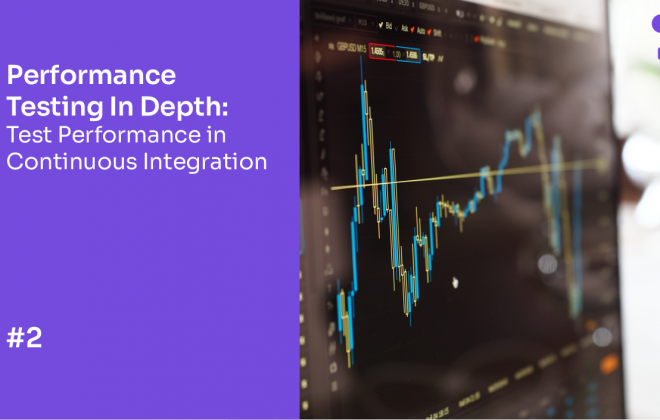Explore the nuances of website stress testing. Discover tactics to enhance performance, tackle digital challenges, and create exceptional user experiences. Dive into our detailed article and learn how to successfully stress test a website.


In the expansive world of software testing, it’s crucial to evaluate a website’s readiness for real-world scenarios. Today, we will focus on website stress tests and their vital role in ensuring optimal user experience.
What is Stress Testing?
Stress testing is a type of performance testing, which falls under the umbrella of non-functional testing methodologies.
While performance testing gauges how a web application operates under typical scenarios, this type specifically focuses on extreme conditions, pushing the system to its breaking point to assess its resilience and stability.
- It evaluates how a system behaves when stretched to its absolute limits, employing testing tools to identify how virtual users impact the system under high load.
- It helps us simulate conditions far outside ordinary user interactions.
- It rigorously tests web applications to uncover vulnerabilities, a crucial step to prevent performance issues from affecting the overall experience.
The Importance of Stress Tests
As businesses shift online, fortifying a website’s resilience takes center stage in the growing digital landscape. Leveraging performance testing tools, serve as a diagnostic tool, offering insights into the health of your online platform.
There are instances in which an increase in traffic is expected. Such a surge can expose and exploit vulnerabilities without proper testing, manifesting in bottlenecks or performance issues such as crashes or even data breaches.
It’s about having contingency plans to keep the digital entity healthy and operational regardless of external pressures, ensuring optimal performance even under high traffic or extreme scenarios.
When to Stress Test a Website


Knowing when to stress test a website is pivotal for businesses seeking to maintain a seamless online presence and uphold customer satisfaction.
It’s essential to conduct these tests at strategic points:
- Before a website launch: Conduct stress and load tests to ensure the infrastructure can handle peak traffic levels expected post-launch.
- During promotional campaigns: Anticipate and manage increased user activity by testing to optimize performance during marketing events.
- Following significant updates or expansions: Test website performance post-updates to ensure stability and responsiveness under new conditions.
Additionally, it’s critical to recognize the signs indicating that a website may need a stress test:
- Unexpected Crashes: Frequent, unexplained downtimes can indicate hidden vulnerabilities.
- Sluggish Performance: Slow response time during high-traffic periods signals underlying issues.
- Inconsistent Behavior: Variations in performance experienced by different user types can be a red flag.
By incorporating stress testing into your digital strategy, you can proactively identify and resolve performance bottlenecks, safeguarding against downtime and revenue loss due to poor website performance. Schedule a call with our team so we can help you improve your website’s performance.
Periodic testing as part of routine maintenance helps businesses stay ahead of potential issues and maintain a competitive edge in today’s fast-paced digital landscape.
The User Experience


In this era of digitalization, user’s patience is ever-decreasing. Slow load times or glitches can quickly translate into lost customers and revenue.
Performing stress tests allows businesses to identify and mitigate risks proactively, enabling smooth operations even during unexpected scenarios. They provide a lens to examine potential performance bottlenecks and optimize performance for a seamless experience.
The world of online business is increasingly competitive. A minor glitch or downtime can shift virtual users to competitors in seconds, emphasizing the importance of nonfunctional testing in maintaining user loyalty and engagement.
Stress Testing Methodologies
Understanding how stress testing is conducted and the techniques involved in stress and load tests are essential for making websites and web apps more resilient.
Creating test scenarios that reflect real user behaviors and potential future events, such as anticipated marketing campaigns or product launches, is key. These tests, aim to measure how well web apps handle varying degrees of demand, from the expected number of users to beyond peak levels.
How to Perform a Website Stress Test: Our Approach


Our approach combines historical data, real-world simulations, and a variety of metrics.
Past performance is often an indicative metric. By leveraging historical data we can often forecast how a system will react to certain conditions.
To conduct comprehensive evaluations, it’s essential to craft test scripts and scenarios tailored to the specific nuances of the website since each web application will have unique user interface elements and backend configurations.
An often overlooked, yet crucial aspect, is simulating real-world conditions. This might involve emulating the behavior of thousands of virtual users or creating scenarios where specific resources are under duress.
The test environment itself plays a decisive role. It should closely mirror the live environment, including server configurations, database setups, and any other relevant software/hardware components.
Spike vs. Volume Testing
There are various types of stress tests, each serving a specific purpose in evaluating a website’s health and performance. Among these, Spike Testing and Volume Testing stand out as crucial methodologies for assessing a website’s resilience and responsiveness under varying test conditions.
While both tests simulate increased traffic levels, they do so in different ways, offering unique insights into specific aspects of a web application or website’s performance.
Understanding the differences between these tests is essential for creating effective strategies to optimize the performance of web applications even during periods of high demand.
- Spike Testing: It helps us understand how well a website handles sudden increases in user traffic. It reveals whether the website remains stable and responsive during unexpected surges in activity, providing valuable insights into its readiness for unforeseen challenges.
- Volume Testing: It focuses on a website’s ability to handle large amounts of data. By testing the website under these content-heavy conditions, we gain insights into its scalability and the strength of its infrastructure. This type of testing helps ensure that the website can maintain performance even when dealing with extensive amounts of information.
Stress Test Actions
Understanding the steps and intricacies is essential. Crafting effective test scripts requires precision and a systematic approach. Below is a detailed breakdown of the actions involved.
- Establishing a Realistic Test Environment: Creating an environment that closely resembles your production setup is essential for accurate performance assessment. This environment should mirror the configuration of your live website but remain isolated to prevent any disruptions to your users.
- Outlining Clear Performance Benchmarks: Clearly defining performance benchmarks is crucial for evaluating the effectiveness of your website. These benchmarks should establish what constitutes acceptable performance levels and identify thresholds for failure.
- Designing Dynamic Scenarios Using Test Scripts: Creating dynamic scenarios that simulate real-world user behaviors and interactions is essential for comprehensive performance testing. Test scripts should mimic various user actions, such as browsing pages, submitting forms, and interacting with interactive elements.
- Capturing and Analyzing Vital Data: During performance testing, particularly during stress and load tests, it’s crucial to monitor various metrics such as server health, user experience, load times, and error rates. By analyzing this data, you can gain valuable insights into the website’s performance under stress conditions.
- Using Insights to Enhance Both Frontend and Backend Performance: Analyzing insights gathered from performance tests can provide valuable information for optimizing both frontend and backend performance. By examining metrics such as page load times, server response times, and error rates, you can pinpoint areas of inefficiency and make necessary adjustments to improve overall performance.
- Mitigating Risks: Identifying potential risks and developing strategies to mitigate them is essential for maintaining the stability and reliability of your website. Risks may include hardware failures, software bugs, or unexpected traffic spikes. By proactively identifying and addressing potential risks, you can minimize the likelihood of performance issues impacting your users and ensure uninterrupted service.
- Iterating: Continuous testing and optimization are essential for ensuring the ongoing performance of your website. Stress and load testing should not be viewed as a one-time event but rather as an iterative process that evolves alongside your website. As your website evolves and user behavior changes, it’s crucial to retest and refine your performance testing strategies to ensure consistent performance over time.
Performance Testing Tools


When it comes to strengthening your online presence, leveraging cutting-edge performance testing tools is key to ensuring your website can handle the demands of your audience. By embracing these various testing tools, you can confidently optimize your website’s performance, preemptively address potential issues, and cement your position as a leader in your industry.
Additionally, some of these tools can also be utilized for conducting load tests to assess the website’s performance under varying levels of user traffic.
Exploring Performance Testing Tools
Apache JMeter


JMeter is an open-source Java-based tool that offers powerful stress and load testing capabilities and flexibility to create complex scenarios.
JMeterDSL


JMeter DSL is a domain-specific language for writing JMeter test plans in a more readable and maintainable format. It allows you to design and run performance tests through a graphical interface, without the need for programming knowledge. Explore and learn more about JMeterDSL and its benefits.
BlazeMeter


A cloud-based performance testing platform that allows for scalable and collaborative testing, ideal for businesses of all sizes.
NeoLoad by Tricentis


NeoLoad is a user-friendly performance testing tool that offers advanced features like dynamic infrastructure scaling and real-time analytics.
K6


K6 is an open-source load testing tool built for the modern era, designed for developers and offering a developer-friendly API.
OctoPerf


Octoperf is a cloud-based load testing tool that provides a comprehensive solution for performance testing, including intuitive test creation and analysis features.
The Role of Historical Data in Stress Testing


Historical data plays a pivotal role in Stress and Load Testing. Regardless of whether you’re doing website stress test analyzing the stability of a digital platform or gauging the potential risks in the financial sector, historical data provides invaluable context.
Why is Stress Testing Important?
- Benchmarking: Understanding past performance metrics allows organizations to set meaningful standards for stress and load testing for future assessments.
- Trend Analysis: Historical data helps in recognizing patterns over time, assisting in predicting future behavior or vulnerabilities.
- Informed Decision Making: Accurate past data aids in making decisions grounded in reality rather than assumptions.
A Practical Approach
Taking a practical approach to historical data is crucial for effective performance testing. Here, we outline a systematic methodology for handling historical data, covering data collection, validation, and analysis.
By following these steps, you can ensure that your stress and load tests are based on accurate and relevant information, leading to more insightful and actionable results
Data Collection
- Ensure accurate and consistent logging mechanisms.
- Integrate diverse data sources for a holistic view.
Data Validation
- Regularly verify the accuracy and relevance of the data.
- Cleanse and refine datasets to eliminate anomalies or redundancies.
Data Analysis
- Use advanced analytics tools to dissect data.
- Employ machine learning algorithms for predictive modeling.
The Art of Crafting Scenarios
Crafting realistic scenarios, often based on historical scenarios, provides a lens to evaluate the true performance of a site.
- Historical Data Utilization: Analyzing past traffic surges, downtimes, or glitches can help in devising genuine stress scenarios.
- Predictable vs. Sudden Loads: Determine how the website reacts to both a consistent load (akin to a stationary bicycle) and sudden, unpredictable spikes (similar to a sprint).
- Simulating External Factors: For websites, this could mean testing how third-party integrations hold up or how the system copes when an external API becomes unresponsive.
Why You Need to Start Testing Your Website’s Performance?
The world is unpredictable. Market conditions sway, virtual users behave erratically, and digital landscapes shift. Amidst such uncertainty, it’s comforting to know there are tools, methodologies, and expertise available to help navigate the ever-changing digital terrain.
Leveraging the Benefits of Stress Testing


This type of performance testing offers numerous benefits for businesses seeking to optimize their website’s performance. By proactively subjecting your digital infrastructure to simulated high-traffic scenarios, you can:
- Identify Vulnerabilities: Uncover hidden vulnerabilities and weaknesses in a website’s architecture that may only manifest under heavy load. By identifying these issues early, you can address them before they impact customer satisfaction.
- Enhance Resilience: By subjecting your website to severe conditions, you can assess its resilience and ability to maintain functionality even under duress. This allows you to strengthen your digital infrastructure and mitigate the risk of downtime or performance degradation during peak periods.
- Optimize Performance: By identifying bottlenecks and optimizing resource allocation, you can enhance the overall user experience and increase customer satisfaction.
- Ensure Readiness: Testing at strategic points, such as before a website launch or during promotional campaigns, ensures that your website is prepared to handle increased user activity. By proactively testing your digital infrastructure, you can avoid unexpected performance issues and maintain a seamless online presence.
- Reduce Downtime: By addressing performance vulnerabilities uncovered in the testing process, you can minimize the risk of downtime and revenue loss due to poor performance.
- Build Customer Trust: A fast, reliable website is essential for building customer trust and loyalty. By prioritizing testing and ensuring optimal website performance, you can instill confidence in your brand and enhance the overall customer experience.
With thorough testing, we can help you face the unpredictable, enabling optimal performance.
Looking for a Quality Partner?
Embrace agility and cost-effectiveness through our Performance Testing Services, hand in hand with our performance test engineers.
We are quality partners! Learn more about our solutions here and understand why we have received such praise. Contact us to discuss how we can help you grow your business.


Tags In


Abstracta Team
Related Posts
3 Challenges to Effective Performance Testing in Continuous Integration
Performance testing in CI is a must. Here’s what to take into account from day one. Recently I gave a talk at Agile Testing Days USA in Boston, my first time attending this testing conference and I was extremely pleased with the event, the things…
Continuous Performance Testing: The Best Way to Test Performance in Continuous Integration
Which are the benefits of continuous performance testing? Why is it so crucial to achieving an efficient continuous integration pipeline? Find out in the second article of our saga entitled “Performance Testing In-Depth”, with the voice of Roger Abelenda and an interview with Andréi Guchin….
Leave a Reply Cancel reply
Search
Contents








